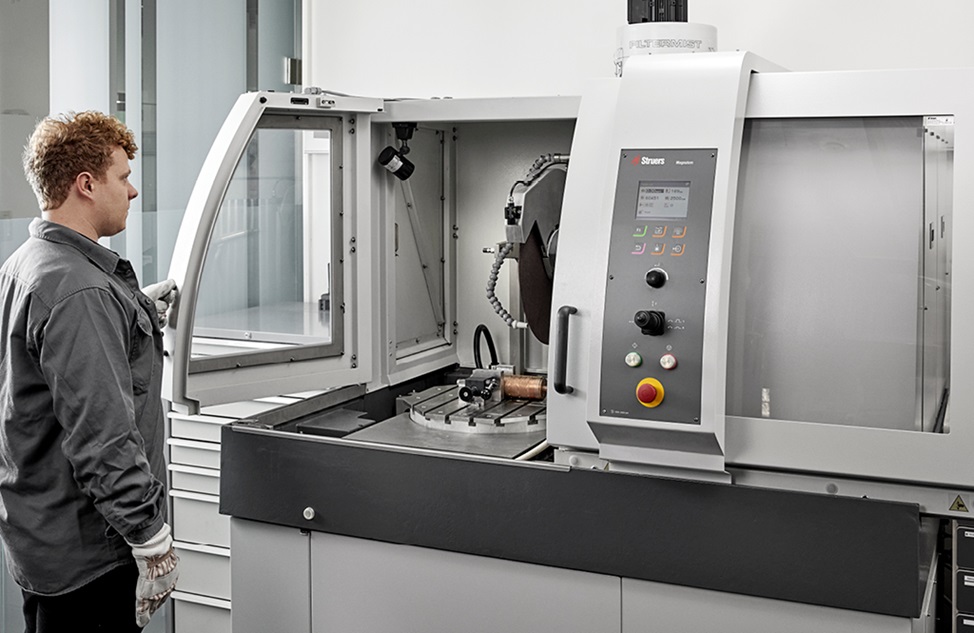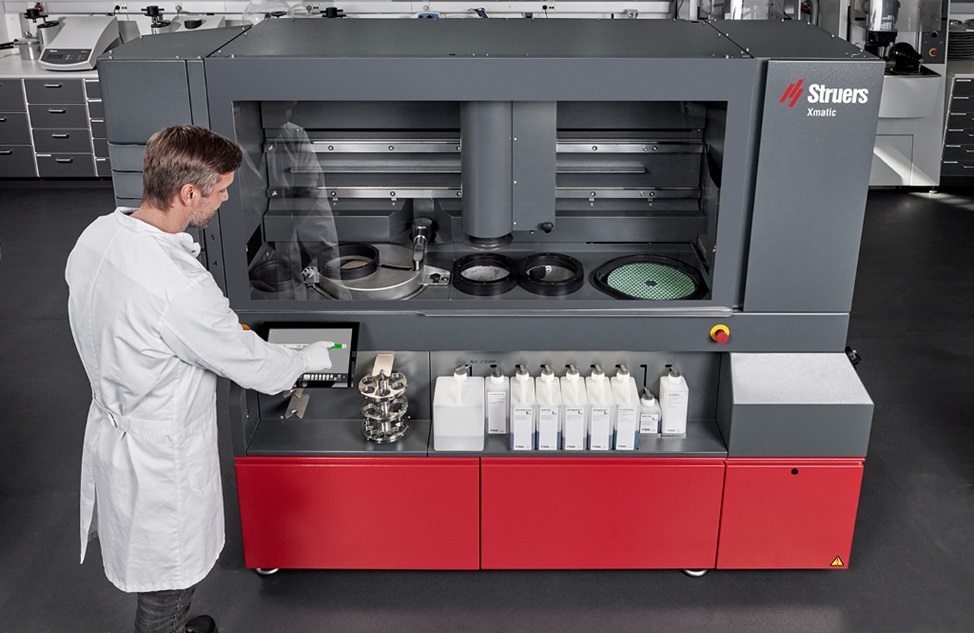REMOVE THE RISK OF HUMAN ERROR
Inevitable human error in the materialographic process can greatly affect the outcome. As a result, businesses must spend significant time and money training technicians to use their equipment (resources which could be used more profitably elsewhere). However, the global market for skilled labor is limited and even with a well-trained workforce, removing human error entirely is virtually impossible.
Automation provides the solution. An automated system will never get distracted, have an off day, or not be at work due to illness. By minimizing human interaction, the risk of error is virtually eliminated as a machine will go through exactly the same process steps in exactly the same way.
Another benefit is increased safety for operators as almost everything is handled by the machine, removing many potential risks such as holding the specimen during grinding and polishing or strain from carrying heavy specimen holders to a cleaning station between steps. As a result, the entire process can be optimized for reproducibility, efficiency, and safety, ensuring your lab is as productive as possible.
MAXIMIZE REPRODUCIBILITY OF RESULTS
It is essential that the materialographic process delivers reproducible preparation results, every time. Automation makes this possible by greatly reducing human involvement. Coupled with an intuitive user interface, it is very difficult for operators to do anything wrong. The result is improved accuracy, safety, and repeatability, which translates into greater certainty and lower costs for your business, and better quality control for your customers.
GET BETTER PROCESS STANDARDIZATION
To improve the methods used, and to ensure the best possible repeatability, your lab managers need the right insight and data across all stages of the process. Automated equipment can provide users with data on multiple variables that enables users to standardize their process for greater repeatability, optimize it for greater accuracy and efficiency, more reliable audit trails, and plan for scheduled maintenance.
ACHIEVE HIGHER THROUGHPUT
Labs today need a more reliable way to deliver the promised number of specimens, in less time, with fewer hands, and – as a key concern – with minimal stops. By automating key steps, the entire materialographic process can be made more efficient using fewer specialists. Less risk of human error also means less rework, which can be otherwise very costly in terms of time, materials, and consumables.
GET MORE OUT OF YOUR RESOURCES
Traditionally, materialography had to be done by a highly trained specialist. This can put inevitable pressure on the business to train and retain a skilled workforce in the lab. In addition, if that particular specialist is not at work that day, then the entire materialographic process cannot go ahead. With a fully automated system, the machine is the ‘expert’, which means far less training is required and more people are able to operate it. This helps to maintain throughput, productivity, and efficiency, and reduces resource costs.
CREATE A SAFER WORKING ENVIRONMENT
For business like yours, the safety of your workforce is a prime concern. Labs can be dangerous environments, which is why it is important to reduce potential hazards as much as possible. A significant benefit of an automated machine is that everything requires less physical interaction (and is often housed within a closed chamber) and therefore presents less risk to users’ health and safety. This helps workers to feel more comfortable in the lab, thereby reducing absenteeism and increasing productivity.




